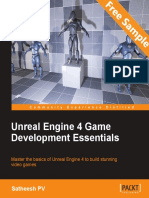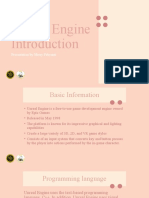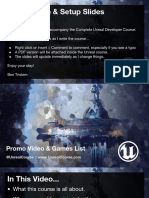0% found this document useful (0 votes)
82 views1 pageUE5 Getting Started Guide
The UE5 Getting Started Guide is aimed at new game developers, providing essential steps for installing Unreal Engine 5 and starting projects using templates. It covers key concepts like Blueprints for visual scripting, building levels, adding gameplay elements, and testing. Additionally, it offers learning resources and emphasizes the importance of backups and version control for larger projects.
Uploaded by
Piotr KasprzakCopyright
© © All Rights Reserved
We take content rights seriously. If you suspect this is your content, claim it here.
Available Formats
Download as PDF, TXT or read online on Scribd
0% found this document useful (0 votes)
82 views1 pageUE5 Getting Started Guide
The UE5 Getting Started Guide is aimed at new game developers, providing essential steps for installing Unreal Engine 5 and starting projects using templates. It covers key concepts like Blueprints for visual scripting, building levels, adding gameplay elements, and testing. Additionally, it offers learning resources and emphasizes the importance of backups and version control for larger projects.
Uploaded by
Piotr KasprzakCopyright
© © All Rights Reserved
We take content rights seriously. If you suspect this is your content, claim it here.
Available Formats
Download as PDF, TXT or read online on Scribd
/ 1

























































